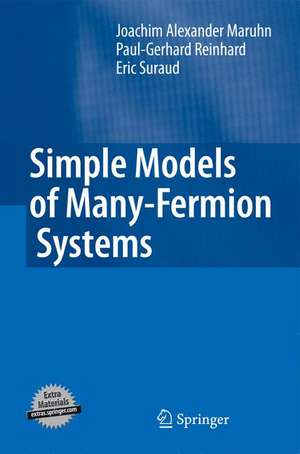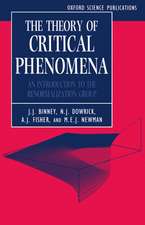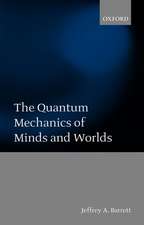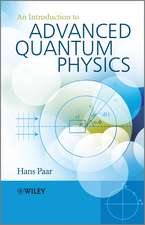Simple Models of Many-Fermion Systems
Autor Joachim Alexander Maruhn, Paul-Gerhard Reinhard, Eric Surauden Limba Engleză Hardback – 29 mai 2010
| Toate formatele și edițiile | Preț | Express |
|---|---|---|
| Paperback (1) | 640.24 lei 6-8 săpt. | |
| Springer Berlin, Heidelberg – 26 noi 2014 | 640.24 lei 6-8 săpt. | |
| Hardback (1) | 646.43 lei 6-8 săpt. | |
| Springer Berlin, Heidelberg – 29 mai 2010 | 646.43 lei 6-8 săpt. |
Preț: 646.43 lei
Preț vechi: 760.50 lei
-15% Nou
Puncte Express: 970
Preț estimativ în valută:
123.71€ • 134.33$ • 103.92£
123.71€ • 134.33$ • 103.92£
Carte tipărită la comandă
Livrare economică 23 aprilie-07 mai
Preluare comenzi: 021 569.72.76
Specificații
ISBN-13: 9783642038389
ISBN-10: 3642038387
Pagini: 292
Ilustrații: XI, 279 p. With online files/update.
Dimensiuni: 155 x 235 x 25 mm
Greutate: 0.59 kg
Ediția:2010
Editura: Springer Berlin, Heidelberg
Colecția Springer
Locul publicării:Berlin, Heidelberg, Germany
ISBN-10: 3642038387
Pagini: 292
Ilustrații: XI, 279 p. With online files/update.
Dimensiuni: 155 x 235 x 25 mm
Greutate: 0.59 kg
Ediția:2010
Editura: Springer Berlin, Heidelberg
Colecția Springer
Locul publicării:Berlin, Heidelberg, Germany
Public țintă
ResearchCuprins
The Variety of Finite Fermion Systems and Their Basic Properties.- The Fermi-Gas Model.- Particles in an External Field.- Approaches Based on Model Spaces.- Hartree–Fock.- Density Functional Theory.- Quasispin Models.- Excitation Spectra.- Coherent Two-Body Correlations.- Conclusions.
Notă biografică
All three authors are teaching since many years at various university levels. They also have experience in teaching in international summer schools and they have already written several textbooks in nuclear and cluster physics.
Textul de pe ultima copertă
The purpose of this book is to provide a pedestrians route to the physics of many-particle systems. The material is developed along simple and generic models which allow to illuminate the basic mechanisms beyond each approach and which apply to broad variety of systems in different areas of physics and chemistry. The book is sorted in steps of slowly increasing complexity of the models. Complementing numerical tools help to carry on where analytical methods reach their limits. They provide at the same time a useful training for the typical numerical methods in many-body physics.
In order to confine the huge field, we shall focus the discussions on finite systems wherefrom we take the examples of applications. This covers nuclei, atoms, molecules and clusters. The idea of this book is to concentrate first on the generic, robust and simple, approaches and show how they apply to several domains across the specific disciplines. On the other hand, we aim to establish contact with actual research by carrying forth some examples up to realistic applications, attacked with help of a set of simple and still general codes provided at an online repository linked to the book. This latter aspect emphasizes our intention to guide the reader in ”practizing” the tools presented in the book, both at schematic and realistic levels.
In order to confine the huge field, we shall focus the discussions on finite systems wherefrom we take the examples of applications. This covers nuclei, atoms, molecules and clusters. The idea of this book is to concentrate first on the generic, robust and simple, approaches and show how they apply to several domains across the specific disciplines. On the other hand, we aim to establish contact with actual research by carrying forth some examples up to realistic applications, attacked with help of a set of simple and still general codes provided at an online repository linked to the book. This latter aspect emphasizes our intention to guide the reader in ”practizing” the tools presented in the book, both at schematic and realistic levels.
Caracteristici
First overview addressing such a cross-disciplinary topic Material for a one semester course Working tool with practical examples and applications Includes supplementary material: sn.pub/extras



















